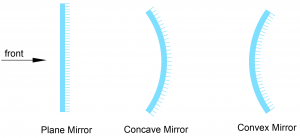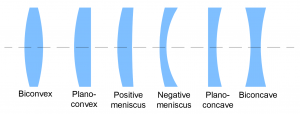The disparity between mirrors and lenses lies in the manner in which light behaves upon interacting with their surfaces. When light encounters any surface, it undergoes two primary phenomena: reflection and refraction. The fundamental contrast between mirrors and lenses lies in the fact that mirrors form images through reflection, where light falls onto a mirror, while lenses form images through refraction.
A mirror, mechanically defined, is a sheet of substrate or metal that reflects incident light. The polished side of a mirror, often coated with a layer of metal amalgam or crafted from naturally reflective metals, facilitates clear reflections of objects placed in front of it.
Mirrors serve numerous practical applications in everyday life, ranging from personal grooming mirrors to more specialized uses such as solar cookers, security applications, periscopes, torch lights, home décor, and telescopes. Various types of mirrors, including plane mirrors, spherical mirrors (concave and convex), each with distinct characteristics, find applications in diverse fields.
Uses of Mirrors Include:

A lens, typically made of glass or transparent material, refracts light that passes through it. Lenses possess two curved surfaces, and the bending of light through these surfaces causes images to appear smaller or larger. Similar to mirrors, lenses can be classified based on their curvature, with convex and concave lenses being the primary types.
Uses of Lenses Include:
Types of Lenses:

Mirrors reflect light with a coating on one side, while lenses manipulate light. Lenses are classified into types like simple and compound, with concave and convex variations base d on refraction.
| Parameter | Mirror | Lens |
| Definition | The mirror, composed of glass with a reflective silvery backing on one side, forms an image through reflection on a single surface. | The lens is a clear material that generates images through refraction on one of its two surfaces. |
| Transparency | Reflective | Transparent |
| Light Interaction | Mirrors reflect light | Lenses refract light. |
| Curvature | It can be plane or curved. | Always curved at one or two surfaces. |
| Number of Surfaces | Mirrors have one reflective surface | Lenses have two reflective surfaces |
| Laws Followed | Laws of reflection | Laws of refraction |
| Types | There are two types: concave and convex | There are six types of lenses. |
| Focal point | Plane mirror has no focal point | It has 2 focal points for each type of lens |
| Manufacture | From glass or metal | From glass or plastic |
In conclusion, the core distinctions between mirrors and lenses stem from their construction and operational principles. Mirrors reflect light on a single surface, while lenses manipulate light through refraction on two surfaces. Both devices, despite their differences, contribute to a variety of applications and find relevance in numerous fields.
At Shanghai Optics, our expertise lies in providing top-quality custom mirrors or lenses. Explore our range of custom mirror and lens solutions and place your order today. For any inquiries, please feel free to contact us, and we’ll be delighted to assist you.